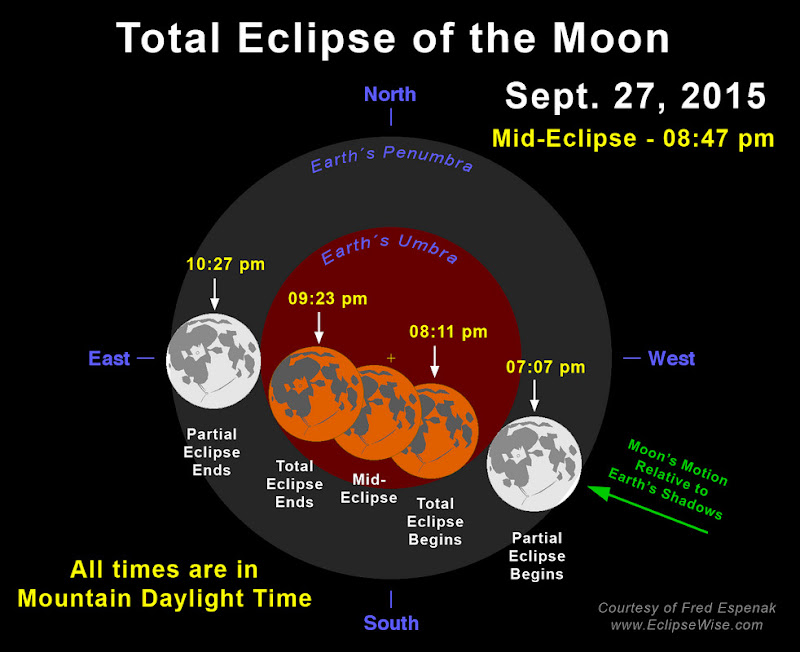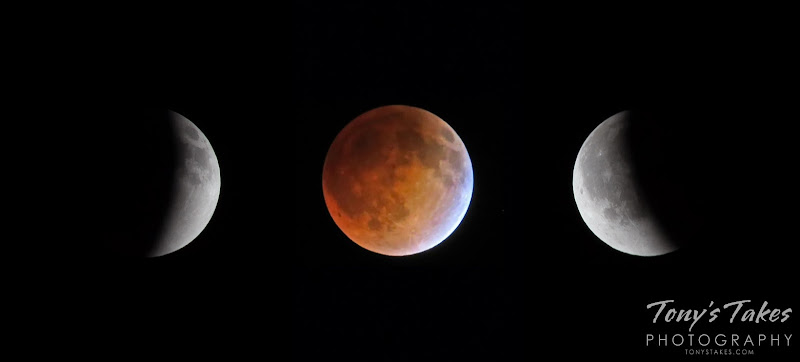
A total lunar eclipse coupled with a ‘supermoon’ will bring a very unusual scene to the sky on Sunday. Taken separately, the two events are not quite as extraordinary or rare. However, this will be the first time in 33 years they have occurred at the same time and the last for another 18 years.
The moon’s orbit around Earth is not a perfect circle and when it is at its closest to us, it appears quite a bit larger to our eye – hence the name ‘supermoon.’
On Sunday it will be about 31,000 miles closer to Earth than it is at its farthest point. According to NASA, this results in it appearing to be about 14% larger and 30% brighter.
The total lunar eclipse will be our second of 2015 and fourth in the past two – a tetrad of eclipses. During these, the moon finds itself in the Earth’s shadow and without direct sunlight hitting its surface, the moon turns an eerie orange / red color – a ‘blood moon.’
The last time these two events coincided was in 1982 and the next time won’t be until 2033. As NASA scientist Noah Petro said, “That’s rare because it’s something an entire generation may not have seen.”
When and where to watch?
The partial eclipse begins at 7:07pm MDT on Sunday, September 27, 2015 with totality starting at 8:11pm. The moon will then be completely eclipsed for a little more than an hour with mid-eclipse at 8:47am. The waning partial eclipse will end at 10:27pm.
One catch for viewing the entire event here along the Front Range is that when it begins, the moon will actually be just starting to rise on the eastern horizon. However, at mid-eclipse the moon will be 21 degrees above the horizon to the east southeast providing a nice view not far above the landscape.
Anyone in the area with a clear view of the lower, eastern sky should have no problem viewing the event.
Will Mother Nature cooperate?
Our unseasonably warm temperatures will be continuing through the weekend so there are no concerns about it being too cold to go outside. Clouds, however, are something to watch closely for. Some atmospheric moisture is expected late in the day Sunday and it is possible cloud cover may impact the clear viewing.
On the day of the eclipse, check our hour-by-hour outlook for the latest sky cover forecast.
What is the ‘blood moon’ and tetrad?

During totality, the moon will be rendered orange / red as the Earth’s shadow envelops the moon. Many are calling this a ‘blood moon’ but the meaning behind that term isn’t exactly clear.
As written on EarthSky.org, some attribute it to the lunar tetrad – four successive full lunar eclipses without any partial eclipses. Tomorrow morning’s eclipse is the second in the lunar tetrad with each full lunar eclipse coming six months apart.
The blood moon as it pertains to these eclipses should not be confused with the October full moon which is also referred to as a blood moon in folklore.

Thanks for the great information and graphics!